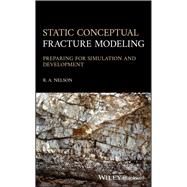Modelling of flow in naturally fractured reservoirs is quickly becoming mandatory in all phases of oil and gas exploration and production. Creation of a Static Conceptual Fracture Model (SCFM) is needed as input to create flow simulations for today and for prediction of flow into the future. Unfortunately, the computer modelers tasked with constructing the gridded fracture model are often not well versed in natural fracture characterization and are often forced to make quick decisions as to the input required by the software used to create these models.
Static Conceptual Fracture Modelling: Preparing for Simulation and Development describes all the fracture and reservoir parameters needed to create the fracture database for effective modelling and how to generate the data and parameter distributions. The material covered in this volume highlights not only natural fracture system quantification and formatting, but also describes best practices for managing technical teams charged with creating the SCFM. This book will become a must on the shelf for all reservoir modelers.






